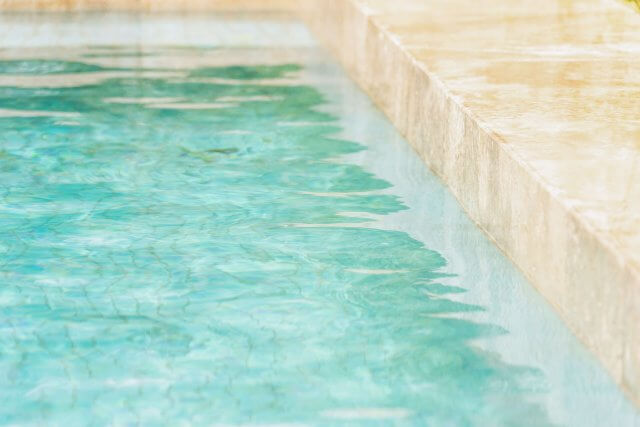Owning a pool/spa is fun, but maintaining it to a high standard is also the owner’s responsibility. It is essential to perform periodic checks of the pool or spa to ensure they meet the guidelines provided by the Victorian Building Association. It helps keep your visitors and family, including children and animals safe, while around the pool.
In this article, we will address a commonly asked question, “Can I check my pool or spa barrier myself?” We will explain your responsibilities as a pool or spa owner and how you can check your pool or spa barrier yourself to ensure they meet the government guidelines. We will also provide several beneficial resources that you can use to perform a pool/spa barrier check independently from time to time.
Conducting regular informal checks of pool or spa safety barrier
While the most expected answer to the question of whether you can perform a check of your pool or spa barrier yourself is a Yes, there are several areas and details that need attention. In addition to the mandatory periodic safety checks performed by VBA (Victorian Building Authority) professionals, being a pool/spa owner, you should conduct regular informal checks of pool or spa safety barriers to keep them in tip-top shape.
To begin with, you can check if the pool/spa barriers like the gate or the fence need repairs, maintenance or even upgrades. Regular wear and tear and damage to the pool/spa barrier requires repair and fixes. Also, you may want to perform fence extensions and add self-latching or self-closing mechanisms to remain compliant with the regulations.
You may need to apply for a building permit before undertaking any development work based on the repairs or changes you intend to make. For example:
- Performing Repairs – Permit not required
- Renovations – A building permit may be required
- Upgrading – Building permit required
- Relocation of a pool or spa – Building permit required
- An additional barrier required – Building permit and safety inspection required
In addition to the guidelines provided above, you may want to read our article on What to consider when doing repairs to get more information on how to perform repairs on your spa/pool barriers.
Another important area you should consider while performing the self-check of your pool or spa barriers is to ensure they meet the safety guidelines.
We have a detailed article on How to meet safety standards, explaining different elements and components of the pool/spa gate or barrier. In the article, you will learn how adhering to the size and height guidelines and your choice of materials can increase the efficiency of safety barriers and keep everyone around safe.

Who needs pool safety barriers?
According to the Victorian Building Authority, if the pool/spa can hold water more than 300 mm or 30 cm in-depth, it must comply with pool safety guidelines. In addition, the safety of children under the age of 5 needs to prevent them from accessing the pool/spa without active adult supervision to prevent accidental drowning.
Pools/spas barriers are a must for:
- in-ground pools and spas
- indoor pools and spas
- pools that can hold more than 300 mm (30 cm) depth of water like:
- above ground pools and spas, including relocatable and inflatable pools requiring on-site assembly and
- bathing and wading pools
Also, take a look at our professional tips on maintaining the pool area, pool deck, barriers and everything else.
You may also want to know that you do not need barriers for the following water bodies:
- pools, spas or inflatable swimming pools that cannot contain a water depth of more than 300 mm
- small inflatable pools that do not consist of multiple components and do not require any assembly.
- bird baths
- fountains and fish ponds
- water supply/storage tanks
- dams
- baths used for personal hygiene and emptied after each use
- spas inside a building (e.g., in a bathroom)

Understanding requirements to get your pool or spa safety barrier compliant
As a pool/spa owner, the safety of your pool or spa visitors and your family around the pool/spa is your primary responsibility and concern. You must take steps to reduce the chances of accidental drowning and ensure the safety of people and animals when they are around the pool.
For a better understanding of your responsibilities as a pool/spa owner and the requirements to get your pool or spa safety barrier compliant, the Victorian Building Authority has made available several checklists. These three simple checklists can help you undertake a detailed self-assessment of your pool/spa barrier by yourself.
- Pool and Spa Safety Barrier Self-Assessment Checklist 1 (For pools and spas installed before 8th April 1991) – We recommend you to use this self-assessment checklist for pool/spa installed within the property before 8th April 1991. This checklist is not an exhaustive list but useful for self-assessment of pool/spa in the properties such as residential homes, apartments, boarding houses, hotels and motels.
- Pool and Spa Safety Barrier Self-Assessment Checklist 2 (For pools and spas installed between 8th April 1991 – 30th April 2010) – This checklist is different from the previous one and relevant for those property owners with pool/spa installed between 8th April 1991 – 30th April 2010.
- Pool and Spa Safety Barrier Self-Assessment Checklist 3 (For pools and spas installed from 1st May 2010 to 30th April 2013) – You can use this barrier self-assessment checklist for pool or spa installed between 1st May 2010 to 30th April 2013.
Throughout this article, we have emphasised the importance of adhering to the guidelines by the governing body for the safety of visitors on-site and family and children using the pool.
Though you can and should independently perform a regular check on your pool and spa barrier yourself, it is worth noting that your pool/spa requires inspection by a Building Inspector – Pool Safety every four years. Also, after successfully passing the check, you must submit a Certificate of Compliance to the council.
It is crucial to understand that several properties fail pool/spa safety inspections during professional checks, followed by receiving a Barrier Non-Compliant Notice indicating the deadlines for fixing the concerned areas of the safety check along with hefty fines.
Get in touch with us for a friendly chat and request a private Pre-Compliance Inspection before undertaking a Safety Inspection with a registered VBA professional to save yourself any hassle during or after the inspection. If you would like to get your pool and spa barriers checked by our team of Pool Barrier Services, get in touch with us today!
